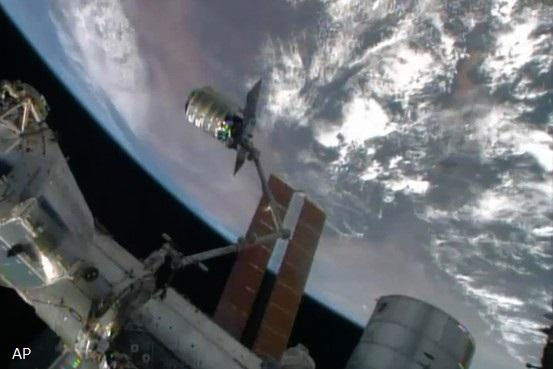US-Australia cooperates to fight cosmic garbage
Cosmic trash has become a real concern, like what is described in Hollywood's "Gravity" when a storm of debris enters the spacecraft in orbit. Earth, making the astronauts stuck.
The Wall Street Journal said the US giant defense group Lockheed Martin has partnered with an Australian company to build a tracking station in the outback land of Australian Outback to track trash. on the universe the size of a baseball or more. Such fragments are considered a threat to commercial satellites and government satellites operating on earth orbit.
'There are up to 200 threats per day identified for satellites in orbit,' said Lockheed Martin spokesman Trevor Thomas. 'Most satellites can withstand some damage, but small pieces of junk collide with satellites daily, while the average satellite costs about $ 500 million.'

Cygnus cargo spacecraft is supplying the international space station (ISS) in July - (Photo: NASA / AP)
Australian partner of Lockheed is Electro Optic Systems company. The alliance is expected to use proven optical and laser tracking technology on Iraq and Afghanistan battlefields to track debris moving at 17,500 miles per hour in space. The device deployed in this western state of Australia will be an additional force for radar-based systems available such as the US Air Force's Space Fence system - a system capable of tracking up to 200,000 objects.
For satellite operators, space garbage is a permanent concern and can cause great damage. Currently more than 21,000 fragments with a radius greater than 10cm are thought to exist in orbit and are monitored regularly by the US Space Monitoring System. These pieces of waste include the tools that astronauts walk out into space and the free-floating debris of rockets exploding after launching into orbit.
However, even small fragments can damage the satellites when a collision occurs. According to the US Aeronautics Agency (NASA), the windows of the shuttle spacecraft launching into orbit must be repaired after returning to Earth if it collides with or on small orbits. Move with ballistic speed.
In 1996, a French satellite was damaged after hitting a fragment of a French rocket that exploded in orbit a decade ago. Five years later, a Russian satellite shut down and collided with and destroyed an American commercial satellite, increasing the number of fragments in orbit by 2,000.
The amount of cosmic garbage has increased unprecedented in 2007 when China demonstrated its military capacity by launching a ballistic missile into its Fengyun-1C weather satellite. Immediately, this 1 ton heavy rocket and satellite shattered into nearly 3,000 pieces.
To deal with cosmic garbage, satellite operators and NASA primarily use radar-based ground devices to identify the approaching pieces of cosmic trash, thereby moving astronauts and setting get out of danger area. In some cases, astronauts on the international space station (ISS) must enter the space ships of the Soyuz capsule form to avoid the risk of catastrophic collisions with space junk.
Lockheed Martin and Electro Optic Systems plan to use their monitoring station to track space junk at locations where previous systems never tracked. Initially, they will use optical technology to detect debris, then use laser technology to calculate the distance from the earth to the debris as well as the movement speed of the debris. According to Electro Optic Systems, an average of 1 satellite is broken every year due to collision with cosmic garbage.
It is expected that the monitoring station will start construction this year and be completed in early 2016. Electro Optic Systems expects that this monitoring station to be operational will enhance the ability to track space garbage. of the world 25% more.
- America - Japan cooperates to monitor pillar garbage
- Europe studies the project of clearing cosmic garbage
- Turn garbage in the universe into radiation shield
- Japan makes a net to clean garbage in space
- The danger when cosmic garbage returns to devastate the Earth
- Cosmic garbage!
- Effective way to deal with cosmic garbage
- Russia developed a system to eliminate cosmic garbage
- SST telescope monitors cosmic garbage and foreign objects
- Which country discharges the most waste into the universe?
- 'Overload' cosmic garbage
- Clear up garbage on the vast universe
 Van Allen's belt and evidence that the Apollo 11 mission to the Moon was myth
Van Allen's belt and evidence that the Apollo 11 mission to the Moon was myth The levels of civilization in the universe (Kardashev scale)
The levels of civilization in the universe (Kardashev scale) Today Mars, the sun and the Earth are aligned
Today Mars, the sun and the Earth are aligned The Amazon owner announced a secret plan to build a space base for thousands of people
The Amazon owner announced a secret plan to build a space base for thousands of people